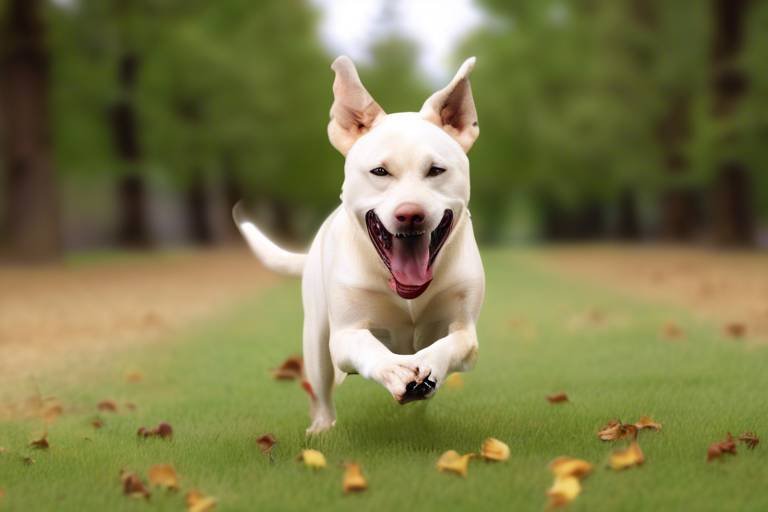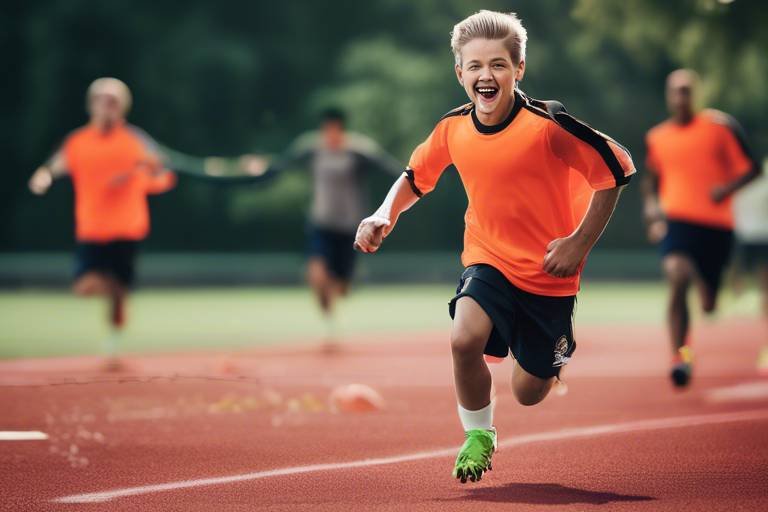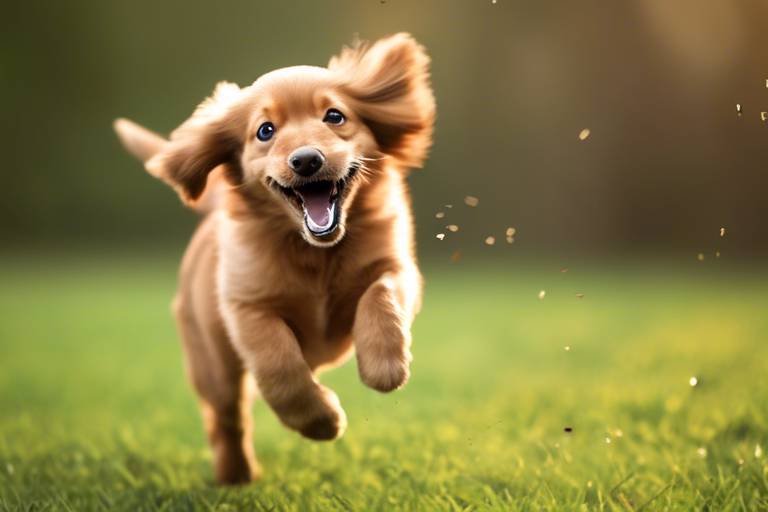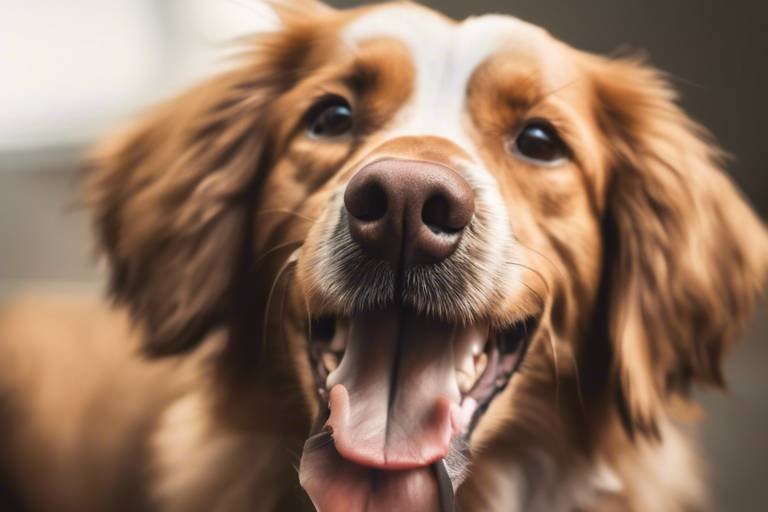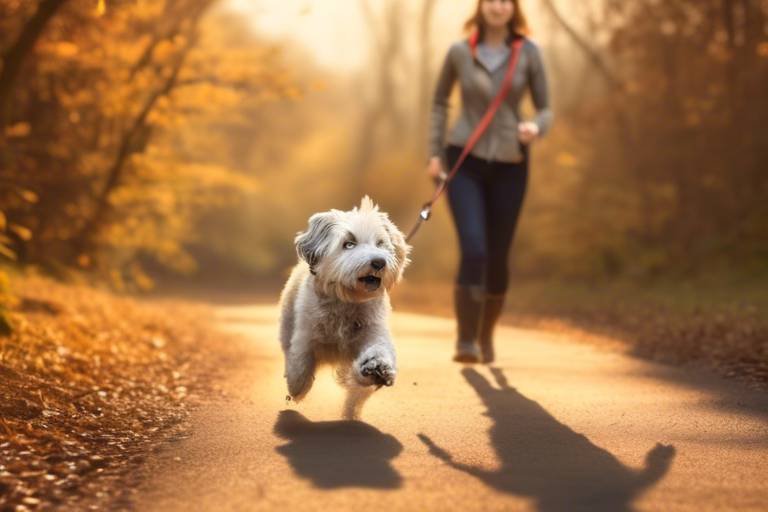Understanding Your Dog’s Learning Triggers
Every dog owner knows that training can sometimes feel like a puzzle. Why does your pup respond to certain commands but not others? What makes them perk up at the sound of a treat bag? Understanding your dog’s learning triggers is key to unlocking their potential and making training a rewarding experience for both of you. Just like humans, dogs are influenced by a variety of factors when it comes to learning. These factors can include environmental cues, social interactions, and individual preferences. By recognizing these triggers, you can enhance your training techniques and create a more effective learning atmosphere.
Imagine for a moment that you’re in a classroom. If the room is noisy, cluttered, or filled with distractions, how well do you think you would learn? The same concept applies to our furry friends. Dogs thrive in environments that are conducive to learning. When you understand what makes your dog tick, you can tailor your training sessions to be more engaging and effective. Whether it’s the smell of their favorite treat, the excitement of playtime, or the warmth of your praise, these elements can significantly impact how quickly and effectively your dog learns.
Moreover, social interactions can serve as powerful learning triggers. Dogs are social animals, and they often learn from observing other dogs or humans. This means that your training sessions can be enriched by incorporating playdates with other dogs or even training classes. These social experiences can help reinforce good behavior and make learning a fun and interactive process. So, are you ready to dive deeper into the world of dog training? Let’s explore the various factors that influence how dogs learn and how you can use this knowledge to enhance your training techniques.
Positive reinforcement is a powerful tool in dog training. It encourages desired behaviors by rewarding them, making learning a positive experience for both the dog and the owner. When you reward your dog for good behavior, you’re not just teaching them what to do; you’re also building a bond based on trust and mutual respect. This method is far more effective than punishment, which can lead to fear and anxiety.
Understanding what motivates your dog—be it food, play, or praise—can significantly enhance training effectiveness. Recognizing these motivators helps tailor training methods to suit your dog's unique preferences. For instance, some dogs may be more food-driven, while others may respond better to toys or affection. The key is to experiment and find out what makes your dog excited to learn.
Food is often the strongest motivator for dogs. Discover how to use treats effectively during training sessions to reinforce good behavior and create a positive learning environment. The right treats can make all the difference, transforming a mundane training session into an exciting opportunity for your dog to learn.
Selecting appropriate treats is crucial for effective training. Learn how to choose treats that are enticing and suitable for your dog's dietary needs, ensuring they remain engaged. For example, small, soft treats are often ideal because they can be consumed quickly, allowing for uninterrupted training.
Understanding the timing and frequency of treats can enhance learning. This section discusses how to effectively reward your dog to maximize their learning potential. Timing is everything; rewarding your dog immediately after they perform the desired behavior reinforces the connection between the action and the reward.
Social interactions play a vital role in a dog's learning process. This section examines how engaging with other dogs and people can influence their behavior and training outcomes. Dogs learn from each other, so incorporating playtime with other dogs can be an effective way to enhance their training experience.
The environment in which training occurs can greatly affect a dog’s ability to learn. Explore how different settings can either enhance or hinder the learning experience. A quiet, distraction-free zone is ideal for teaching new commands, while a more stimulating environment can be used to reinforce learned behaviors.
Distractions can significantly impact a dog's focus during training. Learn strategies to minimize distractions and create an optimal learning environment for your dog. Consider training in different locations to help your dog generalize their learning and stay focused even when distractions are present.
Just like humans, dogs have unique learning styles. This section delves into various learning preferences, helping owners adapt their training approaches to suit their dog’s individual needs. Observing how your dog learns best can help you tailor your training sessions for maximum effectiveness.
- What is the best way to train my dog? The best way to train your dog is through positive reinforcement, using rewards like treats, praise, or playtime.
- How can I find out what motivates my dog? Experiment with different rewards during training sessions to see which ones your dog responds to best.
- Are there specific environments that are better for training? Yes, a quiet, distraction-free environment is generally best for teaching new commands, while more stimulating settings can be used for reinforcing learned behaviors.
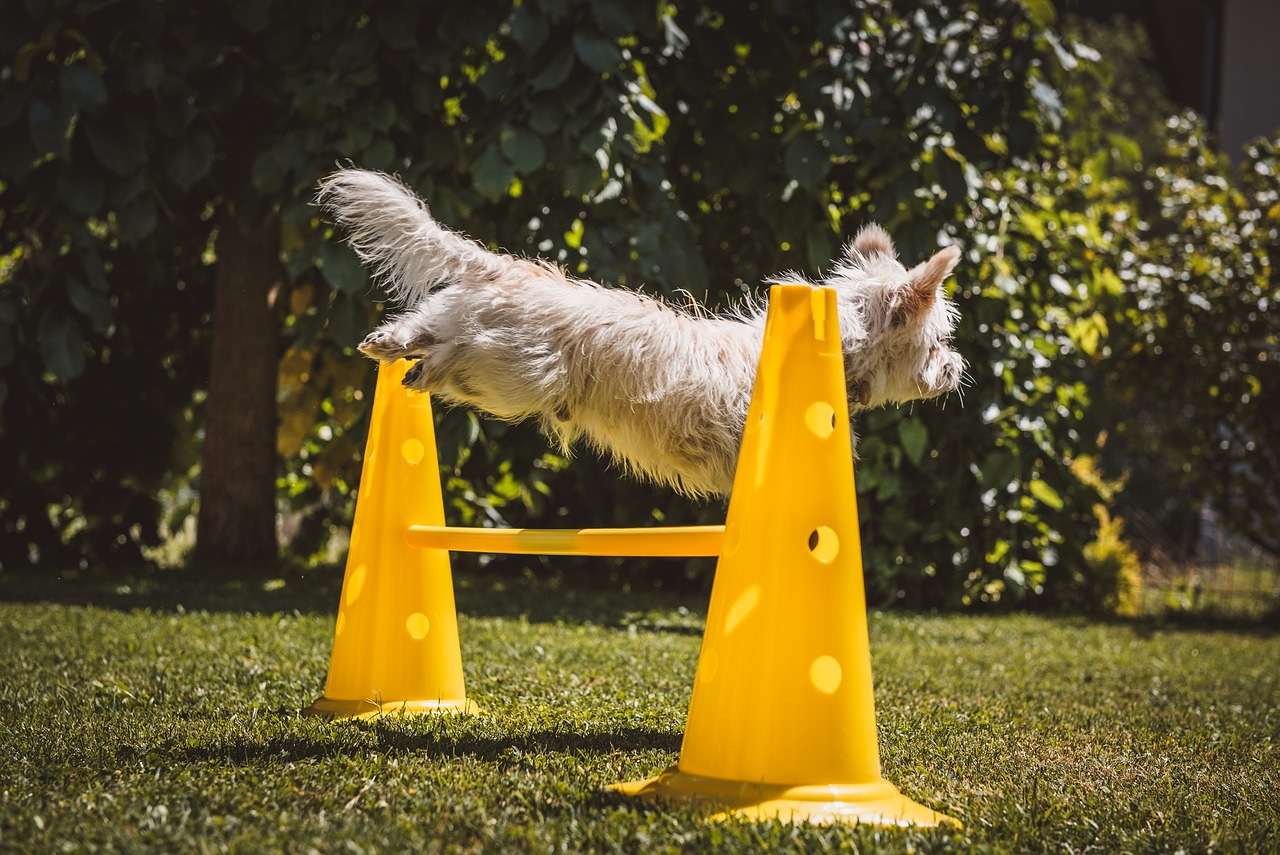
The Importance of Positive Reinforcement
Positive reinforcement is not just a buzzword in dog training; it’s the cornerstone of effective learning. Imagine trying to teach a child to ride a bike without offering any encouragement or praise. It would be a rather daunting task, wouldn't it? Similarly, dogs thrive on positive feedback, and this method transforms training sessions into enjoyable experiences for both the dog and the owner. By rewarding desired behaviors with treats, praise, or playtime, you create a positive association that encourages your furry friend to repeat those behaviors.
When we talk about positive reinforcement, it’s important to understand that it’s not just about giving a treat when your dog sits or stays. It’s about creating a learning environment where your dog feels motivated to engage. For instance, if your dog loves to play fetch, incorporating that game into your training can significantly enhance their enthusiasm. Think of it as mixing a bit of fun into the homework routine—who wouldn’t be more excited to learn if there’s a reward waiting at the end?
Moreover, the effectiveness of positive reinforcement lies in its consistency. Dogs are creatures of habit, and they learn best when they can predict the outcome of their actions. This means that if you consistently reward good behavior, your dog will quickly learn what actions lead to positive outcomes. A study conducted by the American Kennel Club found that dogs trained with positive reinforcement techniques not only learned commands faster but also retained the information longer compared to those trained using negative methods.
To illustrate the power of positive reinforcement, consider the following table that outlines its key benefits:
| Benefit | Description |
|---|---|
| Improved Behavior | Dogs are more likely to repeat behaviors that are rewarded. |
| Stronger Bond | Positive interactions enhance the relationship between dog and owner. |
| Reduced Fear | Training becomes a positive experience, reducing anxiety and fear. |
| Increased Motivation | Dogs become eager to learn when they know rewards are involved. |
Incorporating positive reinforcement into your training sessions doesn’t have to be complex. Start by identifying what your dog enjoys most—be it treats, toys, or verbal praise. Then, use these motivators strategically. For example, if your dog responds well to treats, ensure you have a variety of options to keep their interest piqued. Remember, the key is to reward your dog immediately after they exhibit the desired behavior so they can connect the dots between their action and the reward.
In conclusion, positive reinforcement is not just a training technique; it’s a philosophy that encourages a loving and supportive environment for your dog to learn and grow. By focusing on what your dog does right rather than what they do wrong, you pave the way for a happier and more obedient companion. So, the next time you sit down for a training session, remember: a little praise goes a long way!
- What is positive reinforcement? Positive reinforcement is a training technique that involves rewarding desired behaviors to encourage their repetition.
- Can I use positive reinforcement with older dogs? Absolutely! Positive reinforcement can be effective with dogs of all ages.
- What types of rewards can I use? Rewards can include treats, toys, praise, or playtime—whatever motivates your dog the most!
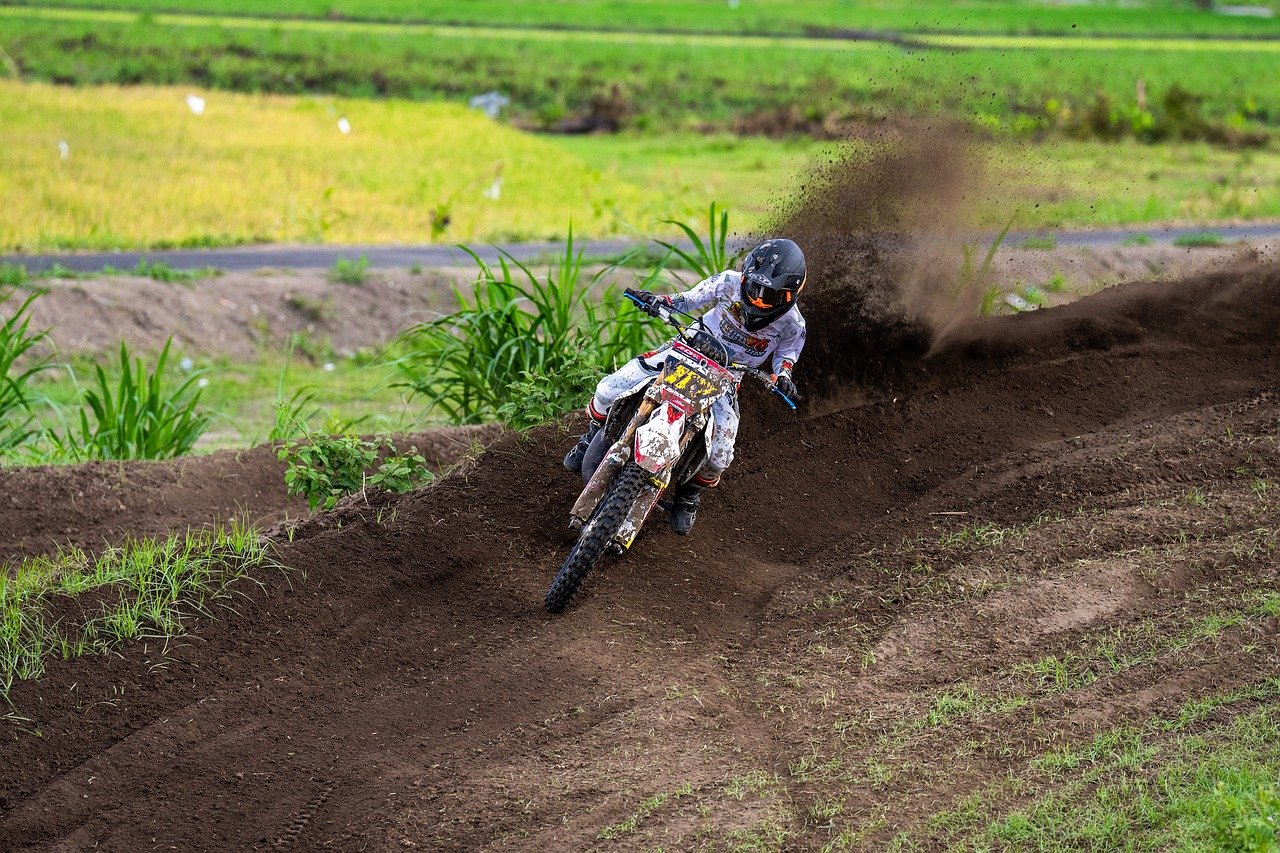
Identifying Your Dog’s Motivation
Understanding what drives your furry friend is essential for effective training. Just like people, dogs have their own unique motivators that can spark their interest and encourage them to learn. These motivators can generally be categorized into three main areas: food, play, and praise. By identifying which of these resonates most with your dog, you can tailor your training techniques to make learning a fun and rewarding experience. Imagine trying to motivate a kid to study math with a history book—it just wouldn’t work, right? The same goes for dogs!
To kick things off, let’s talk about food. For many dogs, treats are the ultimate motivator. The smell of a tasty morsel can ignite their enthusiasm, making them eager to learn. However, not all treats are created equal. It’s important to choose treats that are not only appealing but also healthy. Consider your dog's dietary needs and preferences. For instance, if your dog is a picky eater, you might want to experiment with a variety of treats to see which ones get their tail wagging. Here’s a quick table to help you identify some popular treat options:
| Treat Type | Pros | Cons |
|---|---|---|
| Soft Treats | Easy to chew; highly enticing | Can be high in calories |
| Crunchy Treats | Good for dental health | May not be as motivating |
| Homemade Treats | Customizable; fresh ingredients | Time-consuming to prepare |
Next up is play. Many dogs thrive on interaction and playtime. If your dog gets excited about fetch or tug-of-war, use these activities as rewards during training. For example, after a successful command, toss their favorite toy as a reward. It’s a great way to reinforce good behavior while also letting them burn off some energy. Think of it like giving a child a break to play after they finish their homework—it keeps them motivated!
Lastly, let’s not forget about praise. Dogs are social animals that crave attention and approval from their owners. A simple “good boy!” or a scratch behind the ears can be incredibly motivating for your pup. The key is to be enthusiastic and genuine in your praise. Dogs can sense your energy, and if you're excited, they will be too! It’s akin to a coach cheering on their team; the more encouragement they receive, the harder they play.
In summary, identifying your dog’s motivation is a game-changer when it comes to training. By focusing on what excites them—be it food, play, or praise—you can create a tailored training plan that resonates with their unique personality. Remember, the goal is to make learning a positive experience. After all, a motivated dog is a happy dog!
- How can I tell what motivates my dog? - Observe their reactions to treats, toys, and praise. Experiment with different motivators to see which ones elicit the most excitement.
- Can I use multiple motivators? - Absolutely! Many dogs respond well to a combination of food, play, and praise. Mixing it up can keep training sessions fresh and engaging.
- What if my dog isn’t motivated by food? - If food doesn’t seem to excite your dog, try focusing on play or praise instead. Every dog is different, and finding the right motivator may take some time.
Food as a Learning Trigger
When it comes to dog training, food is often the strongest motivator. Imagine this: you’re at a party, and someone brings out a delicious cake. What do you do? You gravitate towards it, right? That’s exactly how dogs feel about food! Using treats effectively during training sessions can transform the learning experience for your furry friend. Not only does it reinforce good behavior, but it also creates a positive atmosphere that encourages your dog to engage and learn.
To make the most of food as a learning trigger, it’s essential to understand how to use treats wisely. Think of treats as a form of currency in your dog’s world. The more valuable the treat, the more likely your dog will be to perform the desired behavior. For instance, if your dog loves peanut butter, using it as a reward can make them more eager to learn. However, it’s not just about the type of treat; it’s also about the timing and how you present it during training sessions.
Consider the following strategies to effectively use food as a learning trigger:
- Choose High-Value Treats: Select treats that your dog absolutely loves. This could range from small pieces of chicken to specially formulated dog treats. The more enticing the treat, the more motivated your dog will be.
- Use Treats for Reinforcement: Whenever your dog performs a desired action, reward them immediately with a treat. This helps them associate the behavior with the reward, reinforcing the learning process.
- Gradually Fade the Treats: As your dog learns commands, start reducing the frequency of treats. This encourages your dog to respond without expecting a treat every time, promoting long-term learning.
Additionally, it’s crucial to consider the timing and frequency of treats. Timing is everything in dog training. If you reward your dog too late, they may not connect the treat with the behavior you want to reinforce. Aim to reward them within a few seconds of the desired action. This immediate feedback helps solidify the connection in their mind.
Moreover, the frequency of treats should be adjusted according to your dog’s progress. In the beginning, you might need to offer treats every time they follow a command. As they become more consistent, you can start to reward them intermittently. This method not only keeps your dog motivated but also mirrors how real-life situations work—sometimes you get rewarded, and sometimes you don’t!
In summary, food is a powerful learning trigger that can significantly enhance your dog’s training experience. By choosing the right treats, timing your rewards, and adjusting the frequency of treats, you can create a positive learning environment where your dog thrives. So, the next time you sit down for a training session, remember that those little morsels of goodness can make all the difference in your dog’s learning journey.
Q: Can I use my dog's regular food as treats during training?
A: Absolutely! You can use your dog's regular kibble as treats, especially if they are motivated by food. Just ensure that the quantity doesn’t exceed their daily calorie intake.
Q: How do I know if a treat is high value for my dog?
A: High-value treats are usually those that your dog gets excited about. Experiment with different options, such as meat, cheese, or specialized dog treats, to see which ones elicit the best response.
Q: Is it okay to give my dog too many treats during training?
A: Moderation is key. While treats are effective for training, overindulging can lead to obesity and health issues. Always adjust your dog’s regular meals to accommodate the extra calories from treats.
Choosing the Right Treats
When it comes to dog training, selecting the right treats can make all the difference. Imagine trying to entice a child with a toy they don't like—it's just not going to work, right? The same principle applies to our furry friends. Treats should be not only enticing but also appropriate for your dog's dietary needs. This means considering factors such as their age, size, and any food allergies they may have. For instance, a small puppy might not benefit from a large, hard biscuit, while an older dog may require softer treats due to dental issues.
Additionally, it's essential to choose treats that are high in quality and made from wholesome ingredients. Look for options with real meat as the first ingredient, and avoid those with artificial additives or fillers. A good rule of thumb is to read the ingredient list just like you would for your own food. You wouldn't want to feed your dog something you wouldn't eat yourself!
When selecting treats, consider the training context. If you're working on basic commands, small, easily digestible treats are ideal because they allow for quick rewards without interrupting the flow of training. On the other hand, if you're rewarding your dog for a significant achievement, such as learning a new trick, a larger, more special treat can make the moment feel more celebratory.
Here’s a quick table summarizing some popular treat options and their best uses:
| Treat Type | Best For | Notes |
|---|---|---|
| Soft Treats | Training Sessions | Easy to chew and digest, great for quick rewards. |
| Crunchy Biscuits | Occasional Rewards | Good for dental health but may take longer to consume. |
| Freeze-Dried Meat | High-Stakes Training | Highly motivating; dogs love the taste! |
| Fruits and Vegetables | Healthy Snacks | Check for safety; some are great for training. |
Ultimately, the right treats should align with your dog's preferences and your training goals. By experimenting with different types and observing your dog's reactions, you'll soon discover what gets their tail wagging and their focus sharpened. Remember, training should be a fun and rewarding experience for both you and your dog, and the right treats can help foster that positive environment!
- What are the best treats for training? Soft, small treats are often the best for training as they are easy to chew and can be consumed quickly.
- Can I use my dog's regular food as treats? Yes, if your dog is motivated by their regular kibble, you can use it as training treats, especially for less exciting tasks.
- Are homemade treats a good option? Absolutely! Homemade treats can be a healthy alternative, just ensure they are safe for dogs and free from harmful ingredients.
- How often should I treat my dog during training? Use treats frequently during training sessions, but adjust based on your dog's progress and weight to avoid overfeeding.
Timing and Frequency of Treats
When it comes to dog training, the timing and frequency of treats can make all the difference in how effectively your dog learns. Imagine you're trying to teach a child to ride a bike; if you only give them praise after they’ve completed the ride, they might not connect the dots as quickly as if you praised them every time they pedaled correctly. The same principle applies to dogs. Immediate rewards help your furry friend understand exactly what behavior is being reinforced.
Timing is crucial. Ideally, you want to reward your dog within a few seconds of them performing the desired behavior. This immediate feedback creates a clear connection in their mind between the action and the reward. For example, if your dog sits on command, giving them a treat right away reinforces that sitting is a good thing. On the flip side, if you wait too long, your dog may not understand what they’re being rewarded for, leading to confusion and frustration.
As for frequency, it’s essential to strike a balance. In the beginning stages of training, you might want to reward your dog every time they perform the desired behavior. This approach builds confidence and encourages them to repeat the action. However, as your dog becomes more proficient, you can gradually reduce the frequency of treats, transitioning to a variable reward schedule. This method keeps your dog engaged and motivated, as they never know when the next treat will come!
Here’s a simple table to illustrate the transition from frequent to variable rewards:
| Stage | Rewarding Frequency | Example |
|---|---|---|
| Initial Training | Every time | Reward after every sit |
| Intermediate Training | Every few times | Reward after every second sit |
| Advanced Training | Randomly | Reward occasionally, mixed with praise |
It’s also important to consider the type of treats you’re using. High-value treats, like small pieces of chicken or cheese, can be more effective during initial training, while less exciting treats can be used as your dog becomes more skilled. Keep in mind that the goal is to maintain your dog’s interest and enthusiasm throughout the training process.
In conclusion, mastering the timing and frequency of treats is vital for effective dog training. By providing immediate rewards and adjusting the frequency as your dog learns, you create a positive and engaging learning environment. Ultimately, this approach not only enhances your dog’s skills but also strengthens the bond between you and your furry companion.
- How long should I wait before rewarding my dog? Aim to reward your dog within 1-3 seconds of them performing the desired behavior to ensure they make the connection.
- Can I use regular dog food as treats? Yes, you can use regular dog food, but it’s often better to use higher-value treats for more challenging commands or during initial training.
- What if my dog loses interest in treats? If your dog seems uninterested, try switching to different types of treats or using toys as rewards.
Social Interaction and Learning
When it comes to our furry friends, social interaction is not just a luxury; it's a fundamental part of their learning process. Just like humans, dogs thrive on connections with others, whether that's with their fellow canines or with their beloved humans. Have you ever noticed how your dog perks up at the sight of another dog? That excitement isn't just about playtime; it's a crucial aspect of their development and training.
Dogs are social creatures by nature, and their interactions can significantly shape their behavior and training outcomes. Engaging with other dogs can introduce them to new experiences, helping them learn important social cues and behaviors. For instance, when a puppy plays with another dog, they learn about boundaries, bite inhibition, and appropriate ways to communicate. These lessons are invaluable and lay the groundwork for how they interact with both dogs and humans throughout their lives.
Moreover, socialization can enhance your dog’s confidence. A well-socialized dog is more likely to be comfortable in various situations, reducing anxiety and fear. This comfort level can make training sessions more productive, as a relaxed dog is far more receptive to learning. Think of it this way: just as you might feel more at ease and open to learning in a friendly classroom, your dog will be more inclined to absorb lessons in a positive, social environment.
To maximize the benefits of social interactions, consider incorporating group training classes into your dog's routine. These classes not only provide structured learning but also allow dogs to interact with their peers under the supervision of a professional trainer. This environment fosters healthy competition and encourages dogs to learn from one another. Plus, it’s a fantastic opportunity for owners to connect and share experiences, creating a supportive community.
However, it’s important to monitor your dog’s interactions closely. Not all dogs are friendly, and some may be more reserved or anxious in social settings. If your dog shows signs of discomfort, it might be best to take a step back and gradually acclimate them to new social situations. Remember, every dog is unique, and their social needs may vary. Tailoring their experiences to suit their personality will lead to a more positive learning journey.
In summary, social interaction is a powerful catalyst for learning in dogs. By facilitating opportunities for your dog to engage with others, you’re not only enhancing their training but also enriching their overall quality of life. So, next time you take your dog to the park or enroll them in a class, remember that these social experiences are just as crucial as the commands you teach them.
- How can I tell if my dog is socializing well? Look for signs of relaxed body language, such as a wagging tail, playful bowing, and a willingness to approach other dogs or people.
- What should I do if my dog is fearful of other dogs? Gradually expose them to controlled environments with calm dogs, and consider seeking advice from a professional trainer.
- Can socialization help with behavioral issues? Yes, proper socialization can reduce anxiety and fear, which often contribute to behavioral problems.
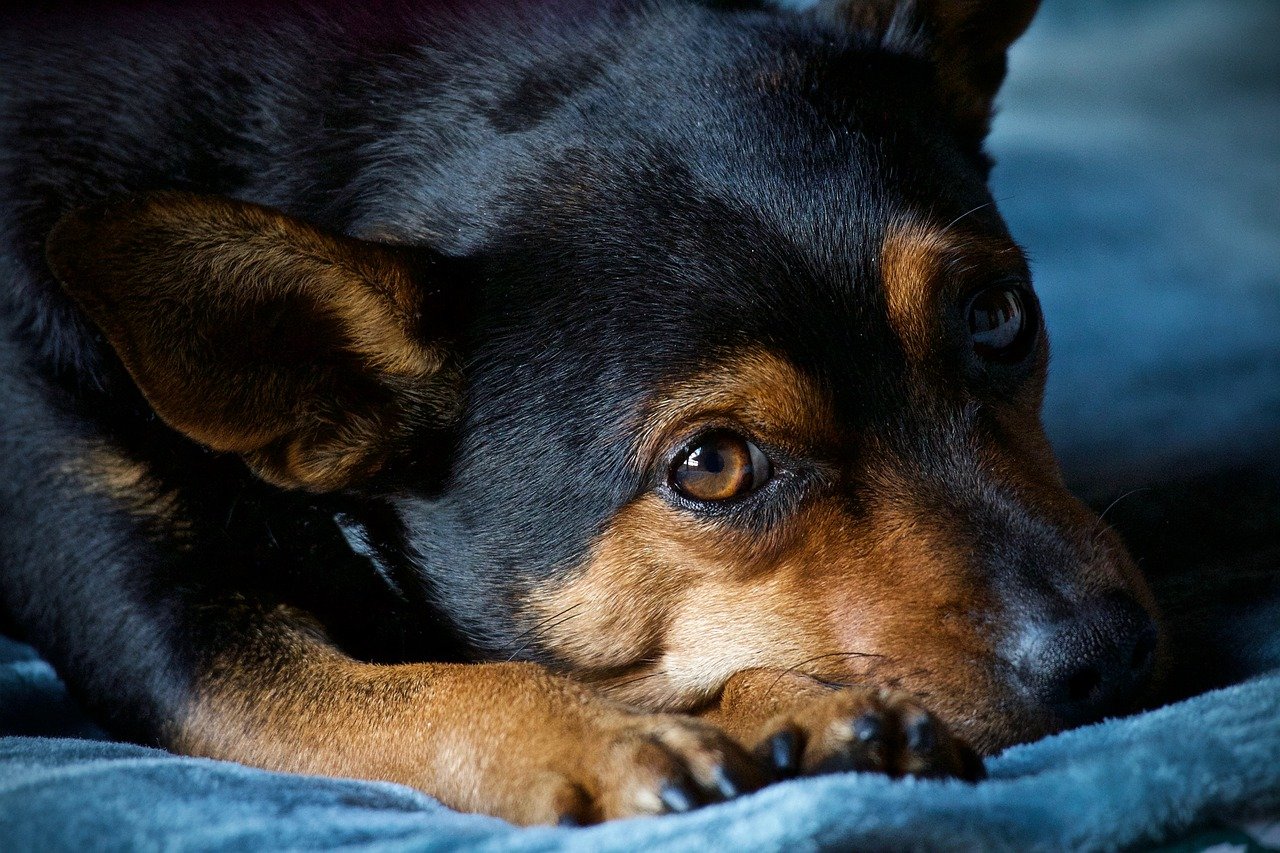
Environmental Factors That Influence Learning
When it comes to training your furry friend, the environment plays a pivotal role in shaping their learning experience. Just like humans, dogs can be affected by their surroundings, and understanding this can make all the difference. Imagine trying to study for an exam in a noisy café versus a quiet library—your dog is no different! The space around them can either help them focus or distract them completely.
One major factor is the presence of distractions. Whether it’s other animals, loud noises, or even the smell of food wafting through the air, these elements can pull your dog’s attention away from the task at hand. To create an optimal learning environment, it’s essential to choose a setting that minimizes these distractions. For instance, training in a quiet room or a secluded park can help your dog concentrate better.
Additionally, the layout and familiarity of the training area can significantly influence your dog's learning. Dogs are creatures of habit, and they often feel more comfortable in familiar surroundings. If you regularly train in the same spot, your dog will start to associate that space with learning and positive experiences. This familiarity can lead to better focus and quicker learning. It’s like going to your favorite café where the ambiance makes you feel relaxed and open to new ideas!
Moreover, the weather can also impact your dog’s ability to learn. Extreme temperatures, whether hot or cold, can affect their mood and energy levels. For example, a hot day might make your dog lethargic, while a cold day could lead them to become distracted by their desire to explore. It’s crucial to consider these factors and choose the right time of day to train. Early mornings or late afternoons often provide more comfortable conditions for both you and your dog.
Another important aspect is the social dynamics within the training environment. If there are other dogs or people around, your dog may feel excited, anxious, or even competitive. This can either hinder or enhance their learning experience. If your dog thrives on social interaction, incorporating play with other dogs during training sessions can be beneficial. However, if they tend to get overwhelmed, it might be wise to train in a more isolated setting until they gain confidence.
In summary, the environment in which you choose to train your dog can greatly influence their learning outcomes. By being mindful of distractions, ensuring familiarity, considering weather conditions, and understanding social dynamics, you can create a space that promotes effective learning. Remember, a well-thought-out training environment can turn a simple learning session into an engaging and productive experience for your beloved pet.
- What are the best environments for training my dog?
Quiet spaces with minimal distractions, such as your home or a secluded park, are ideal for training sessions.
- How can I minimize distractions during training?
Choose a familiar location and schedule training sessions during quieter times of the day when there are fewer people and dogs around.
- Does weather really affect my dog's learning?
Yes, extreme weather conditions can impact your dog's mood and energy levels, so it's best to train during comfortable temperatures.
Distractions in Training Environments
When it comes to training your dog, the environment plays a crucial role in their ability to learn effectively. Imagine trying to concentrate on a complex math problem while loud music is blaring in the background; it's nearly impossible, right? Similarly, dogs can find it challenging to focus on training commands when there are distractions around them. These distractions can come in various forms, from other pets and people to noises and even smells. Understanding how to manage these distractions is essential for creating a productive training atmosphere.
One of the most common distractions in training environments is other dogs. When your furry friend sees another dog, their instinct may be to play or bark, which can divert their attention away from you. To combat this, consider training in a controlled environment where you can gradually introduce distractions. Start in a quiet space and slowly add elements that could potentially distract your dog. This method, often referred to as "desensitization," helps your dog learn to focus on you despite the presence of distractions.
Furthermore, the presence of people can also be a significant distraction. Imagine your dog sees a group of children playing nearby; their excitement might overwhelm them, causing them to forget about the commands you’re trying to teach. To minimize this, you can:
- Choose training times when the area is less crowded.
- Use barriers or distance to keep your dog focused on you.
- Gradually introduce social interactions as rewards for good behavior.
Another factor to consider is noise. Sounds from traffic, construction, or even other animals can significantly impact your dog's concentration. To mitigate this, try to find a quieter location for training sessions. If you can't avoid noise, consider using calming techniques or products designed to help dogs focus in distracting environments. For instance, calming music or pheromone diffusers can create a more serene atmosphere, allowing your dog to concentrate better on the task at hand.
Lastly, it's essential to recognize that every dog is unique. What distracts one dog may not affect another in the same way. Therefore, pay attention to your dog's reactions and adjust your training strategies accordingly. Keep a journal to note which distractions seem to affect your dog the most, and tailor your training sessions to help them overcome these challenges. By creating a structured and distraction-free environment, you’ll be setting your dog up for success, allowing them to learn commands and behaviors more effectively.
Q: How can I tell if my dog is distracted during training?
A: Signs of distraction may include looking away from you, barking at other dogs or people, or becoming restless. If your dog seems unfocused, it may be time to adjust your training environment.
Q: Should I train my dog in public places?
A: Training in public can be beneficial once your dog has mastered commands in a controlled environment. Start with quieter locations and gradually introduce more distractions as your dog becomes more confident.
Q: What should I do if my dog is overly distracted by other dogs?
A: Consider using a leash to maintain control and practice commands at a distance from the distractions. Gradually decrease the distance as your dog becomes more comfortable and focused.
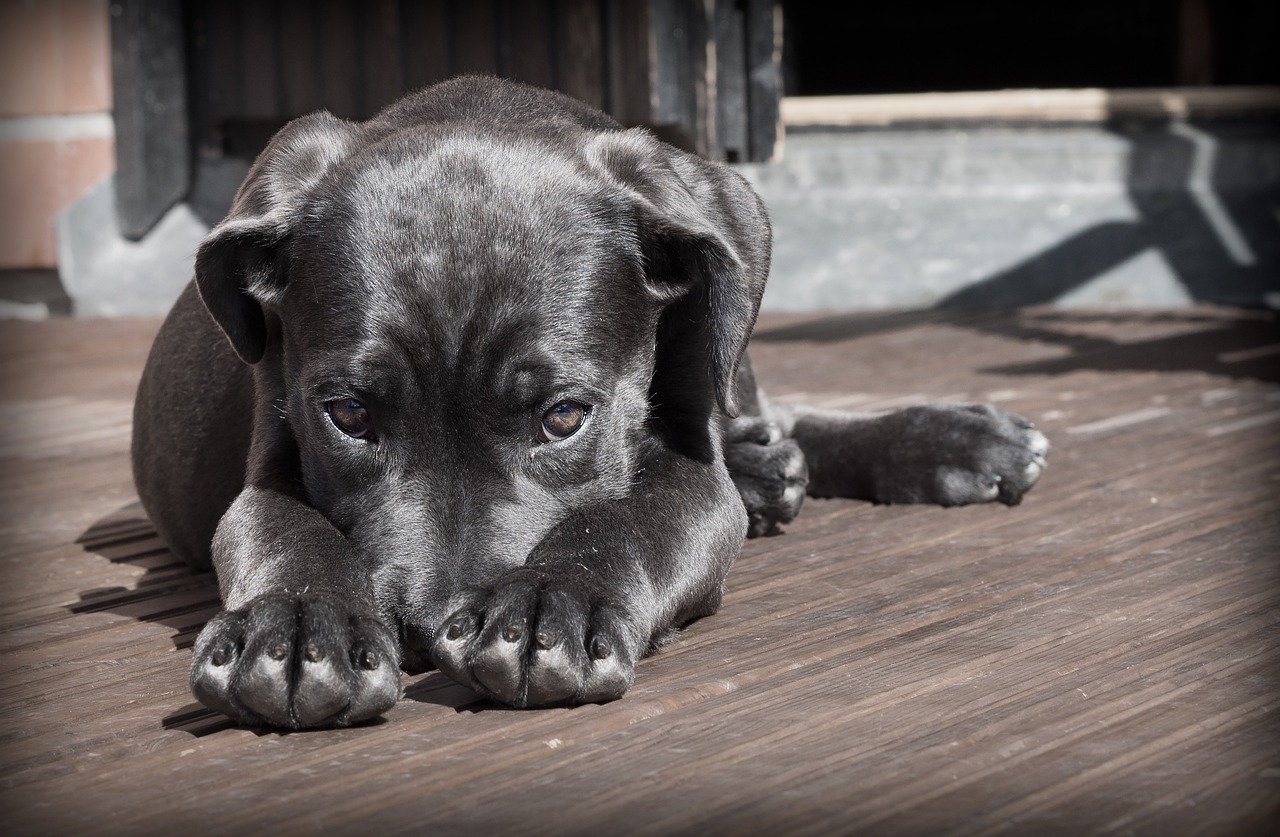
Understanding Individual Learning Styles
Just like humans, dogs have their own unique ways of learning. It’s fascinating to think about how each dog processes information differently, much like how we all have our preferred methods of studying or absorbing new material. Some dogs might learn best through visual cues, while others may respond better to auditory signals or hands-on experiences. Understanding these individual learning styles can significantly enhance your training effectiveness and deepen the bond you share with your furry friend.
One of the primary learning styles observed in dogs is kinesthetic learning, where dogs learn best through movement and physical activities. For instance, a dog that enjoys fetching a ball might grasp commands more quickly when those commands are associated with a fun game. This style emphasizes the importance of incorporating play into training sessions, making them enjoyable and engaging.
On the other hand, some dogs are visual learners. They thrive when they can see what is expected of them. Using hand signals or demonstrating a behavior can be incredibly effective for these dogs. Imagine a dog watching you perform a trick and then mimicking your actions. It’s a beautiful sight when you realize that your pup is not just following commands but is actively trying to understand through observation.
Then, there are the auditory learners. These dogs respond well to verbal cues and tones. They may learn commands more effectively when you use a variety of vocal tones to convey excitement or correction. For instance, a cheerful tone might encourage them to repeat a behavior, while a firm tone can signal that they need to stop. This approach can be particularly rewarding because it allows for a rich interaction between you and your dog, where your voice becomes a tool for communication.
To further understand your dog’s learning style, consider conducting a little experiment. Spend a week focusing on different training techniques. Observe how your dog reacts to various methods:
- Try using treats combined with verbal commands.
- Incorporate hand signals with no verbal commands.
- Engage in physical activities that involve fetching or agility training.
Take notes on which methods seem to resonate most with your dog. You might find that they respond more enthusiastically to one style over another, and that’s perfectly okay! The key is to adapt your training to fit their unique preferences.
Moreover, be mindful that a dog’s learning style can evolve over time. Factors such as age, breed, and even mood can influence how they learn. Puppies, for instance, might be more playful and responsive to kinesthetic learning, while older dogs might prefer a more relaxed approach that emphasizes verbal commands. Always stay observant and flexible, adjusting your methods as needed.
In conclusion, understanding your dog’s individual learning style is not just about enhancing their training; it’s about enriching your relationship. When you tailor your approach to their preferences, you create a positive and effective learning environment that fosters trust and communication. So, the next time you embark on a training session, remember to consider whether your dog is a visual, auditory, or kinesthetic learner. You might just be amazed at how quickly they pick up new skills!
- What are the signs that my dog has a specific learning style?
Look for their reactions to different training methods—do they seem more engaged with visual cues, or do they respond better to verbal commands? - Can I use multiple learning styles in training?
Absolutely! Many dogs benefit from a combination of styles, so feel free to mix it up and see what works best. - How long does it take for a dog to learn a new command?
This can vary widely based on the individual dog and the training method used. Patience and consistency are key!
Frequently Asked Questions (The title must be written in English.)
- What are the best ways to motivate my dog during training?
Motivating your dog can be a game-changer in training! The key is to identify what excites your pup the most. This could be food, playtime, or even praise. Using treats during training sessions can effectively reinforce good behavior, while incorporating play can keep things fun and engaging. Remember, every dog is unique, so try different motivators to see what works best for your furry friend!
- How important is positive reinforcement in dog training?
Positive reinforcement is absolutely crucial in dog training! It creates a positive learning environment where your dog associates good behavior with rewards. This can be anything from treats to verbal praise. By focusing on rewarding desirable behaviors rather than punishing unwanted ones, you help your dog learn faster and build a stronger bond with them.
- What should I consider when choosing treats for training?
When selecting treats for training, consider your dog's dietary needs and preferences. Look for treats that are high-value, meaning they are something your dog truly loves! Also, keep them small and easy to chew, so your dog can quickly get back to focusing on training. Always ensure the treats are safe and healthy, as you want to keep your pup happy and fit!
- How can distractions affect my dog's learning?
Distractions can be a major hurdle during training sessions. They can divert your dog's attention away from you and the task at hand, making it harder for them to learn. To combat this, try to train in a calm, quiet environment initially. Gradually introduce distractions as your dog becomes more confident and focused. This way, you can help them learn to ignore distractions while still being engaged with you.
- Do dogs have different learning styles?
Yes, just like humans, dogs have unique learning styles! Some may learn better through visual cues, while others might respond more to verbal commands or hands-on demonstrations. Observing your dog's reactions during training can help you adapt your methods to suit their individual preferences, making learning more effective and enjoyable for both of you!

